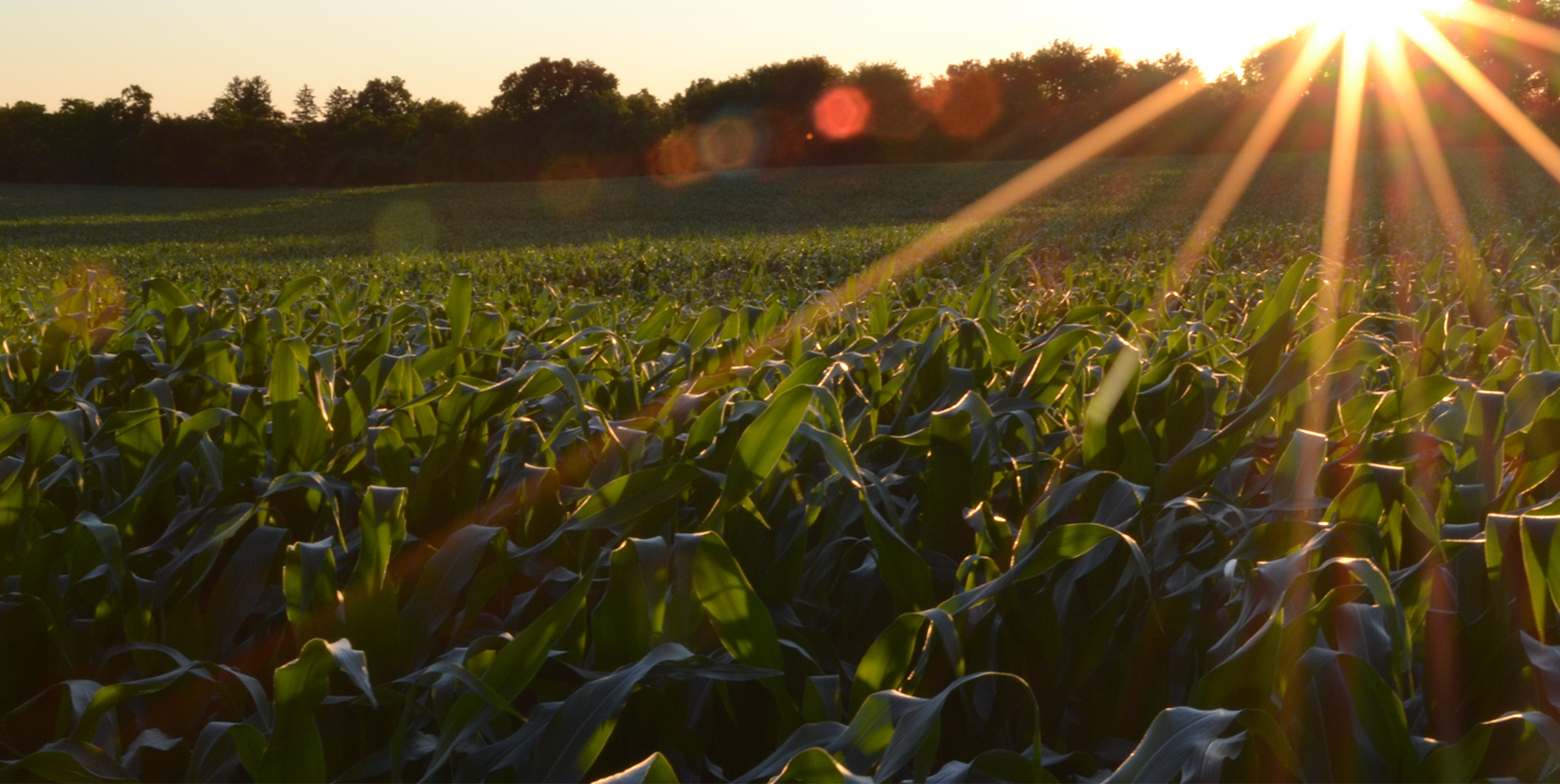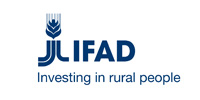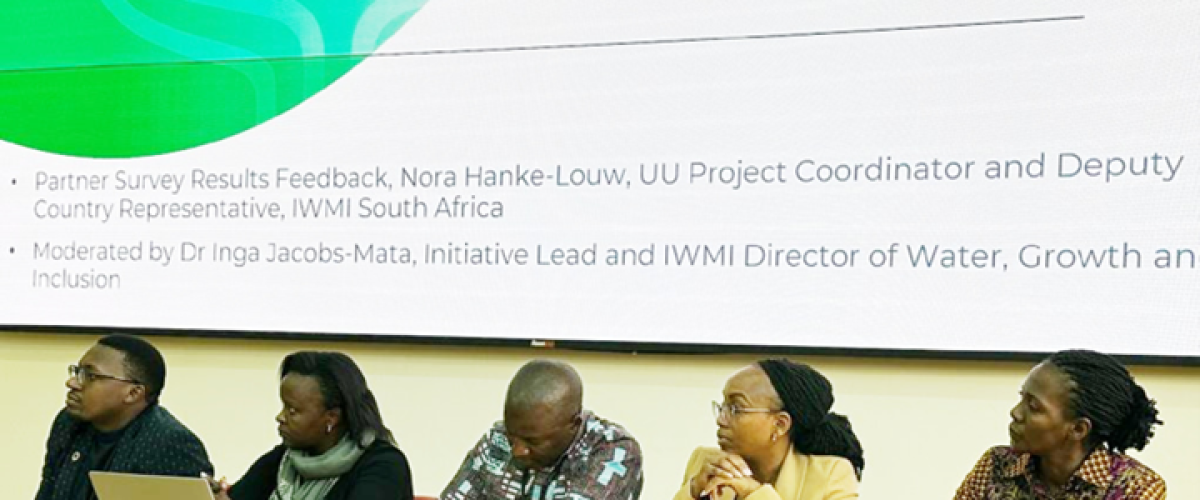
CGIAR’s partners in a dozen countries of East and Southern Africa are “keeping it real” by helping to close the gaps between agricultural ambitions and results
By Susan MacMillan,
Partners from a dozen countries working with the CGIAR Initiative on Diversification in East and Southern Africa, known by its Shona-Swahili hybrid name Ukama Ustawi (denoting “partnership” and “development”, respectively), came together last week (6-9 February 2024) for a “Pause and Reflect” workshop held in Addis Ababa, Ethiopia. Conducted annually, such workshops are now embedded in the adaptive management process of CGIAR’s 30-plus Initiatives. The workshops give CGIAR’s scientists and their partners an annual opportunity to learn lessons and to “course correct” their work by reviewing evidence and adapting to feedback.
CGIAR achieves impact at scale by developing and scaling innovations with and through a wealth of partner organizations. These CGIAR partnerships are generating today some one thousand agricultural innovations working to improve smallholder farming, a full 40 per cent of which originate in this Initiative’s target region of East and Southern Africa.
It is widely acknowledged that innovations — of both technological and non-technological kinds — are needed to transform global food systems and achieve the United Nations’ 17 Sustainable Development Goals. It is also understood that piecemeal interventions and poor scaling have hampered past efforts in agricultural development work. Committed to managing its innovation portfolio in an evidence- and data-driven way, CGIAR is among the few public-sector organizations taking a systematic approach to achieving greater impact at scale. It does so largely by systematically co-creating with partners effective strategies for overcoming the bottlenecks that hinder the scaling of innovations.
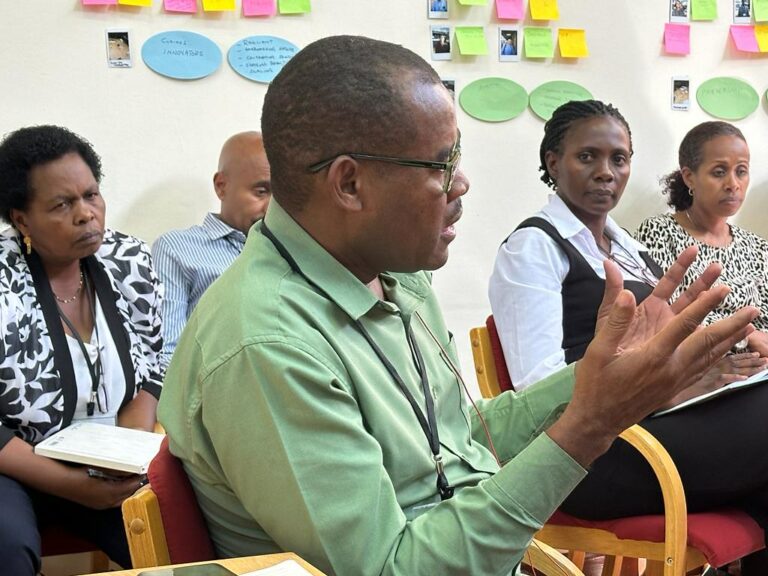
During its “Pause and Reflect” workshop, staff, and partners of Ukama Ustawi deliberated on two major issues: What are the most impactful agricultural innovations in the region? And how can they be delivered at bigger scale?
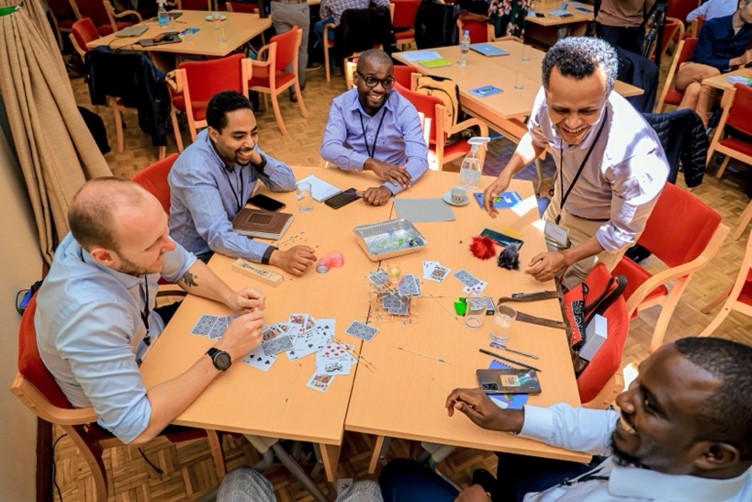
Decision-makers need evidence to help them determine which among many agricultural innovations have greatest potential to improve lives, livelihoods and environments — and in which regions and circumstances. CGIAR has developed and is using advanced methods to score its agricultural innovations against a common set of key parameters. Called Innovation Packages and Scaling Readiness (IPSR for short), CGIAR uses IPSR to collect high-quality data and evidence of its innovation development and scaling work and tracks innovations from “idea” all the way up to “proven and used at scale.” On one afternoon of their “Pause and Reflect” workshop, staff and partners of Ukama Ustawi experimented with using IPSR scores to better understand the process of managing CGIAR’s innovation portfolio. The participants applied “gamification” techniques to portray and animate discussions of 16 of the Initiative’s data-dense innovations in the region. The elements of this immersive game were co-designed by consultants at Playful Solutions and Sherlocked and Ukama Ustawi innovation scaling experts.
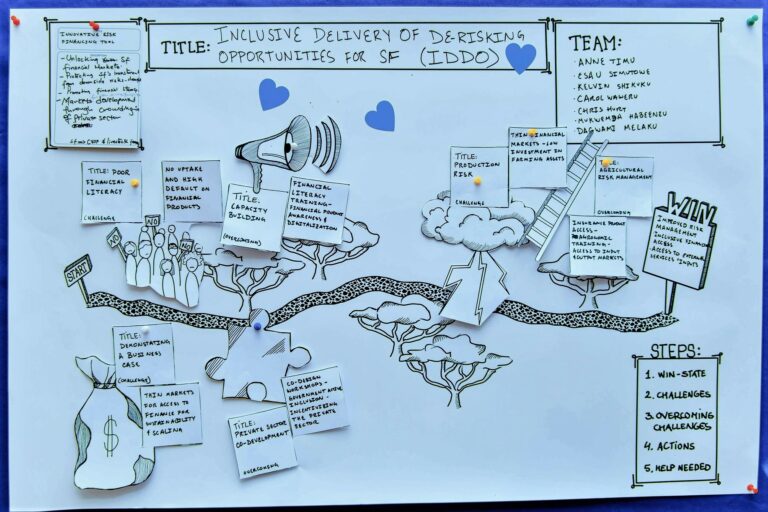
Dividing into a dozen table groups, Ukama Ustawi’s agricultural scientists and development partners reviewed IPSR scores and narratives for all 16 Ukama Ustawi innovations. Each table was asked to select the single innovation they thought most likely to succeed. The tablemates then worked together to fill in a map showing the path leading from the start of the innovation they had chosen to its impact, with descriptions of what a “win-state” would look like, the challenges to be overcome, the actions to take and the help needed for the innovation to have big impact.

At the end of the afternoon, the resulting maps of all 16 “innovation journeys” were pinned to display boards and the participants asked to circle round and review them all. Each participant then voted for what they thought was the most promising innovation by pasting a single heart on their favorite map. The competition between (and within) the groups was strong—and the time periods allocated for each step in the game — from a group’s selection of an innovation, to giving it a title, to developing a narrative storyline using real-world context — were limited to a few minutes each.Arising with the playful competitiveness came increased relatedness, cooperation and learning, with the lively engagement provoking new insights and ideas and the afternoon concluding with participants coming up with “biggest-picture” future scenarios that inspired everyone.
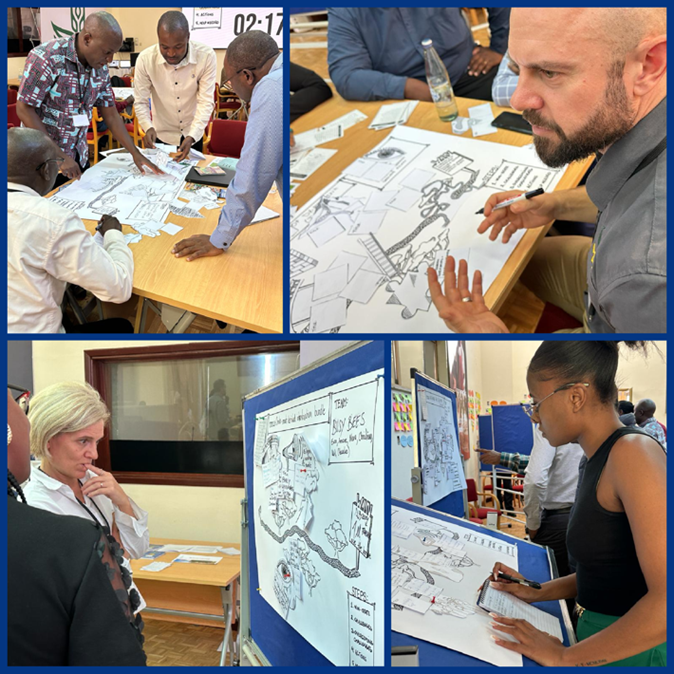
The participants found that having to work quickly with colleagues across diverse disciplines to map innovation journeys was instructive as well as engaging. The game allowed players to better understand various stakeholder interests and motivations. And it brought home to them just how complicated is the set of factors and variables that development workers need to address to get an innovation used at scale — and that decision-makers need to consider when prioritizing agricultural development work.
CCARDESA is implementing the Learning Alliance under work package 4 of the UKAMA USTAWI.
The author is ILRI Emeritus Fellow & CGIAR communications consultant.

